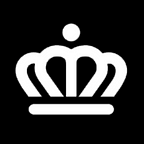Signs of the times
The James L. Knight Foundation recently announced the second round of winners for its Knight Cities Challenge, which seeks innovative ideas to make communities and neighborhoods more engaging, connected and successful. Approximately 4,700 ideas were submitted from 19 cities and 37 ideas were chosen for funding, including two submitted by City of Charlotte employees.
We caught up with Sarah Hazel, a two-time Knights Cities Challenge winner, to talk about her latest winning idea and its future impact on public spaces.
At the last business meeting you shared your winning idea, Can Do Signs, with city council. Explain the concept of this idea.
Can do Signs is about flipping the frame of government signage. Most people associate government signage with prohibited actions in public places. In other words: no loitering, no parking and no feeding the geese. With this idea we wanted to think about what people can do in their public space. There are beautiful public spaces all around Charlotte, but while you’re in them you’re likely to see messages about what you can’t do. These signs will provide an opportunity to spread positivity, build trust and explore the possibilities of our public spaces.
How far along are you with the project and when can we expect to see the first Can Do Sign around Charlotte?
My teammate Monica Carney Holmes (City of Charlotte planning coordinator) and I are in the beginning planning stages now, working through sign concepts. As we start the project we’ve asked ourselves:
How might we brighten someone’s day by encouraging positive behaviors in an unexpected and memorable way, and bring together people and government?
We hope the signs will be an answer to that question. We’d like for people to be able to interact with the messages on the signs — whether it’s through a website or a hashtag — to share what they love doing in their public space. We also want to incorporate a component into the project that will allow us to change out the sign messaging based on public feedback. We anticipate that residents will start seeing signs around Charlotte in eight to ten months.
What impact do you think this project will have in Charlotte?
Think about the beautiful public areas throughout the city. Most people who walk by these spaces may not know they are allowed to occupy them, or think about the possibilities of their use. So, for example, one of our signs could empower people to have a picnic, a three-minute dance party, or they could simply tell others that they are welcome to be there.
This is your second Knight Cities Challenge winning idea, your first was the No Barriers project. Where do you draw inspiration for your ideas?
Lots of people who work here [City of Charlotte] have awesome ideas and it’s fun to explore the possibilities with colleagues. What I’ve done is make list of those things, both my own ideas and ones that I hear from employees, friends, and people in the community. Then, I try to match people and ideas with opportunities. I get excited because they can have a positive ripple effect. With Can Do Signs, if people like the concept, maybe it starts a conversation about what we can do with existing signage to make spaces more inviting.
The cool thing about the Knight Foundation is that they will fund those awesome ideas. They give you permission to fail; they just require you learn.
What were the successes of the No Barriers project?
The goal with No Barriers was for residents from the various neighborhoods surrounding Anita Stroud Park to come together to talk about how they wanted to connect with one another in their shared spaces using light, sound, and play. They are holding events this summer, including fun dance/exercise classes in the park and music events.
This past weekend residents from several neighborhoods came together to paint bright colored bird houses with glow in the dark roofs and placed them in the park. An ornithologist with Mecklenburg County Parks and Recreation came out to assist and teach residents about native birds. Neighbors can now go on bird walks and it provided an opportunity to try something new, together.
They are also working with a local artist to tell the history of their neighborhood through a mural in the park.
What advice would you give to someone who has an idea to improve their community?
Don’t be afraid to bring up good ideas and develop a way to test them quickly and cheaply. It’s low risk to do something small, so be creative, relentlessly optimistic and find great partners to make it happen. From my experience, you’ll be pleasantly surprised by the resources you can find and the support you can garner to bring an idea to life.
For example, with the bird houses, the ornithologist helped us simply because he loves birds and cares about the community. People will donate their time and resources to be a part of developing ideas and trying new things and to learn from them. Residents can take advantage of Neighborhood Matching Grants and other opportunities to do amazing things with small amounts of money.
Don’t give up on an idea and keep building on it! Even if you might not be able to do it right away or to the magnitude that you want to do it. If you can capture the essence of what you’re trying to do, and are willing and excited to incorporate other people’s concepts, you can probably make it happen by starting small and working with people share a similar vision.
Learn more about the 2015 City of Charlotte Knight Cities Challenge winners and other initiatives at charlottenc.gov/civicinnovation.
